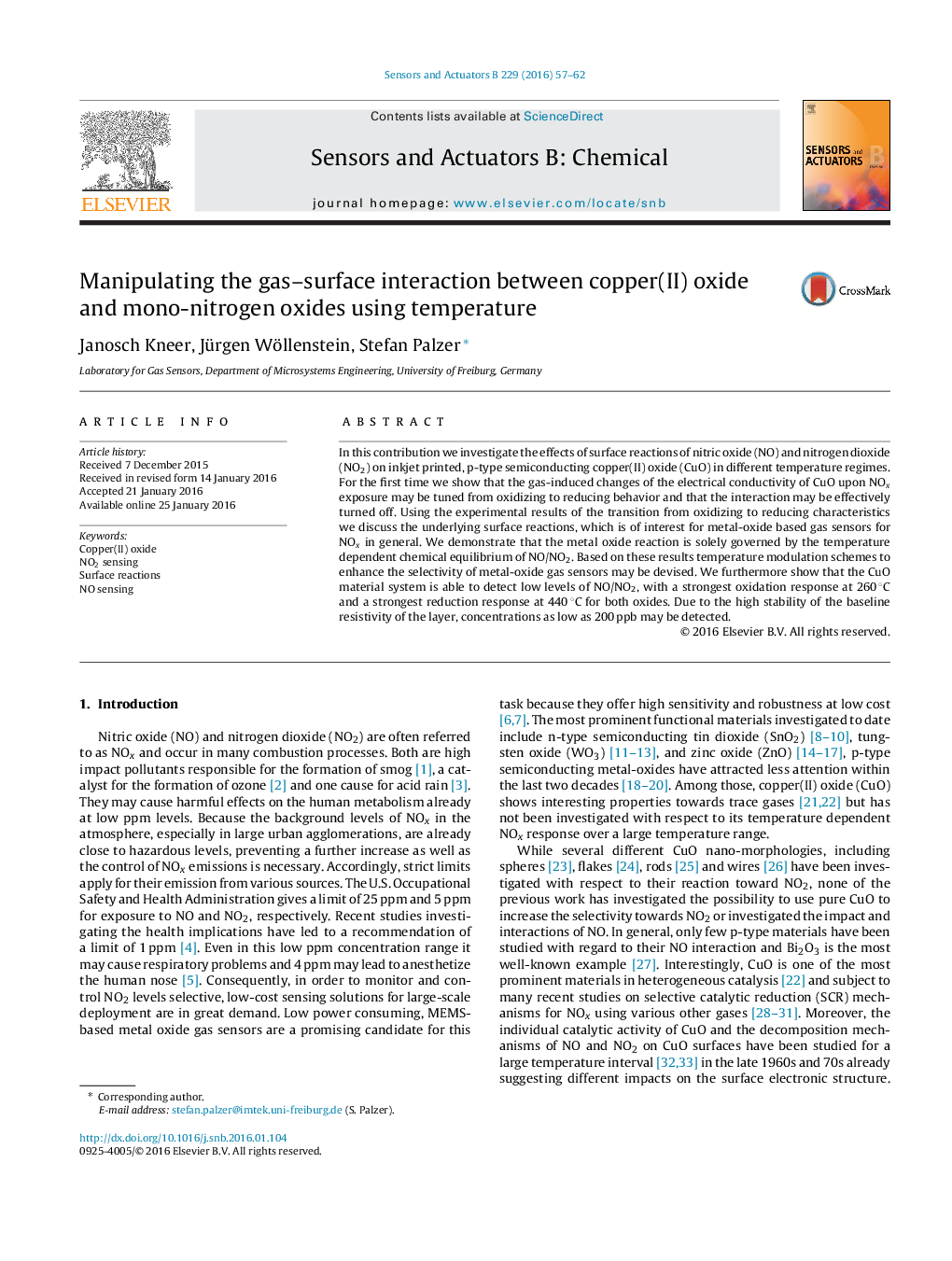| Article ID | Journal | Published Year | Pages | File Type |
|---|---|---|---|---|
| 7144043 | Sensors and Actuators B: Chemical | 2016 | 6 Pages |
Abstract
In this contribution we investigate the effects of surface reactions of nitric oxide (NO) and nitrogen dioxide (NO2) on inkjet printed, p-type semiconducting copper(II) oxide (CuO) in different temperature regimes. For the first time we show that the gas-induced changes of the electrical conductivity of CuO upon NOx exposure may be tuned from oxidizing to reducing behavior and that the interaction may be effectively turned off. Using the experimental results of the transition from oxidizing to reducing characteristics we discuss the underlying surface reactions, which is of interest for metal-oxide based gas sensors for NOx in general. We demonstrate that the metal oxide reaction is solely governed by the temperature dependent chemical equilibrium of NO/NO2. Based on these results temperature modulation schemes to enhance the selectivity of metal-oxide gas sensors may be devised. We furthermore show that the CuO material system is able to detect low levels of NO/NO2, with a strongest oxidation response at 260 °C and a strongest reduction response at 440 °C for both oxides. Due to the high stability of the baseline resistivity of the layer, concentrations as low as 200 ppb may be detected.
Related Topics
Physical Sciences and Engineering
Chemistry
Analytical Chemistry
Authors
Janosch Kneer, Jürgen Wöllenstein, Stefan Palzer,
